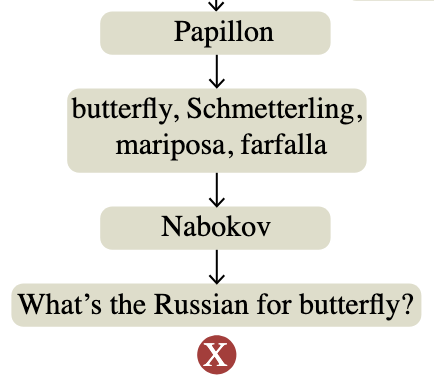In the Long Run We’re All Dead
by Brian Hayes
Published 19 October 2009
So said John Maynard Keynes, but what did he know about the long run? He was a swell who spent his mornings in bed, trading international currencies over tea and crumpets.
Yesterday was my day for the long run: I ran a marathon for the first time in my life. The race was the Baystate Marathon in Lowell, Massachusetts. I finished in 5:11:23, good enough for 1,494th place. (Complete results here.) Except for the leaden skies, the blustery wind, the temperatures falling from the 40s into the 30s, and the steady rain that later turned to “wintry mix” and then a bit of snow, it was a perfectly lovely day for a run along the Merrimack River. I had a splendid time. Really. And yet it would have been even more fun if it hadn’t gone on quite so long.
Somewhere around mile 20, I began reflecting on the fact that the leaders of the race had already finished more than an hour earlier, and by now they were probably showered and dressed and having something hot to eat. I had to ask myself: Why hadn’t I been running faster, so that I too could now be sitting somewhere comfortable and dry and warm? A mile later, as I slogged on, it dawned on me that surviving a marathon is basically an optimization problem. The essential task is to balance the pain of running faster against the suffering of staying on your feet longer. There’s a mathematical function to be minimized here. But what’s the form of that function?
Splashing on through the puddles, I didn’t make a lot of progress on that question, but several hours later, wrapped in a blanket and enjoying a grilled-cheese sandwich, I realized that a simple candidate function is just 1/t + t, where t is the total time of the run. This function clearly has the right boundary behavior. It diverges at t = 0, reflecting the common-sensical notion that running infinitely fast is infinitely painful. The function is also unbounded as t goes to infinity, since taking forever to complete the course would also be very unpleasant. In between these extremes, there must be at least one t of minimal misery.
To get quantitative results from this function, we need to plug in some constants and coefficients. Marathon times near zero are unrealistic, so we ought to replace t with t–a, where a is the best plausible finishing time. Then we need a coefficient b that sets the scaling between the two kinds of discomfort. The full expression becomes:
\[f(t)=\frac{b}{(t-a)} + (t-a)\]
The value of a in this expression is somewhat arbitrary, but a good guideline might be the current world record marathon time of about 2:04. If we set a = 120 minutes, there’s no need to worry that I’ll ever do better than that (and thereby flip over onto the negative branch of the hyperbola, where everyone runs backwards). With this parameter fixed, the location of the least-arduous marathon time depends only on the value of b, which defines the cost of speed vs. the cost of endurance. If my run in Lowell was a correct solution of the optimization problem, then my personal value of b is 36,481.

This line of reasoning has a curious corollary. If I want to improve my marathon time, I don’t have to learn to run faster; all I have to do is become less tolerant of prolonged standing or walking. This impatience will shift the point of minimum pain leftward, toward higher speeds and shorter elapsed times. For example, if I can just get my value of b down to 14,400, I’ll be running four-hour marathons. I don’t think I’ve ever heard of a training program based on this principle.
Update 2009-10-20: This morning it occurred to me that the same graph, relabeled, could also serve to predict the future course of my geriatric athletic career. I’ve been running for only a few years, and I never attempted distances greater than 10K until this summer. Thus it seems reasonable to suppose that with further effort I might improve somewhat. On the other hand, I’m about 30 years beyond the age at which distance runners tend to reach their peak, which argues that I’m running against the wind, so to speak. (In the long run, Keynes was right after all.)
Here’s a fancifully relabeled version of the graph that I find rather cheering.

Unfortunately, there’s no good reason to believe that either of these phenomena are truly described by a law of the specific form 1/t + t. The second term could be t2, or even et. (The marathon “ranking standards” published by USA Track and Field appear to increase quadratically with age.)
Update 2009-10-23: Perhaps someone at The New York Times reads bit-player. In today’s paper there’s a story under the headline “Plodders Have a Place, but Is It in a Marathon?” Juliet Macur writes:
Purists believe that running a marathon should be just that — running the entire course at a relatively fast clip. They point out that a six-hour marathoner is simply participating in the event, not racing in it. Slow runners have disrespected the distance, they say, and have ruined the marathon’s mystique.
Thick-skinned as I am, this stings. My apologies to the purists, and to the mystique. I’ll just note that the hundreds of volunteers who put on the race in which I “participated” were marvelously supportive of us plodders. The high school students at the water stations did not abandon their posts, or lose their enthusiasm, after the fleet-footed runners passed by. And when I arrived at the finish line, hours after the winners, there were still fans applauding in the grandstand, and volunteers to wrap me in a blanket, bring me water, offer congratulations. They had been out in the rain as long as I had, and they weren’t done yet. Three cheers for them.
Responses from readers:
Please note: The bit-player website is no longer equipped to accept and publish comments from readers, but the author is still eager to hear from you. Send comments, criticism, compliments, or corrections to brian@bit-player.org.
Publication history
First publication: 19 October 2009
Converted to Eleventy framework: 22 April 2025



Your curve looks amazingly similar to a Nike swipe. Were you looking at your shoes a lot during the run?
Golly, you’re right! I wonder if I could get a free pair of shoes out of this?
(More likely I’ll get sued for trademark violation.)
Don’t let the running snobs get you down. Except for a few elite runners, everyone else has to deal with the fact that there are lots of faster runners. Some jerks deal with it by looking down on people who are slower than them.
For all of us there will also eventually come a time when we slow down and can no longer set personal records. Then the battle is trying to maintain a reasonably high level of performance. For example, my goal is to stay at a level where I can run a 10K in fewer minutes than my age…